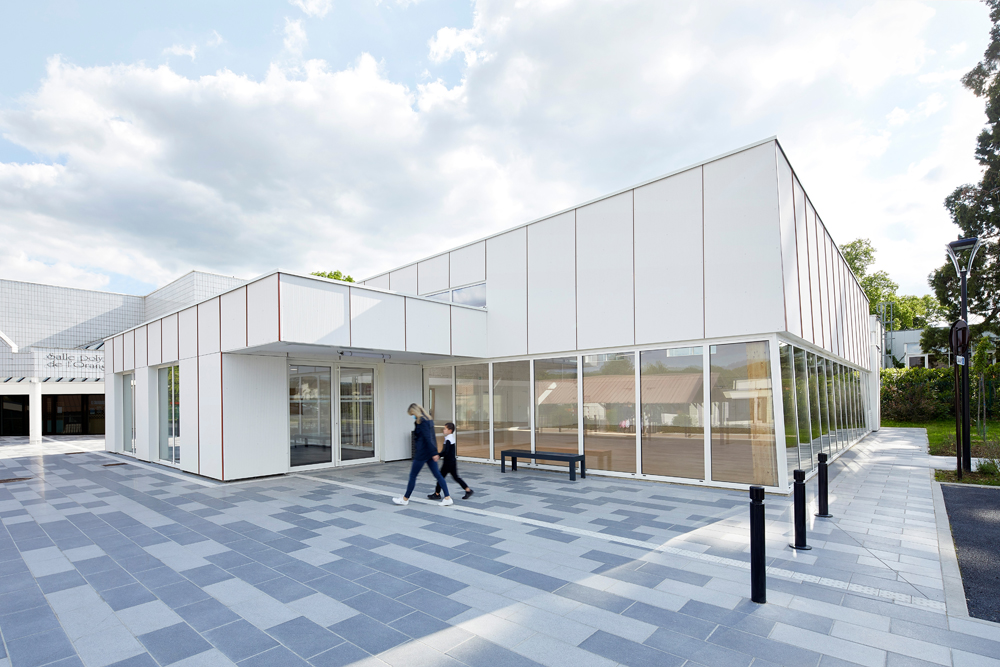
Interest in hempcrete, a mixture of hemp and lime, is growing as the material’s many advantages and carbon-negative footprint gain recognition.
Hempcrete is a biocomposite material that was first used in France in the 1990s, but until recently building codes and a lack of certificates made it largely impossible to use this sustainable material in public buildings. Made of lime and hemp in varying mixtures, hempcrete is typically made into panels or bricks. It is valued for being a lightweight material that is fireproof, durable, and performs well in terms of acoustics. Most importantly for sustainability-minded designers, it is carbon-negative as hemp plants absorb carbon dioxide while they grow. If a local producer can be found, hempcrete can be an extremely green material. No wonder hempcrete faces rising demand in the worldwide quest for more sustainable ways of building.
A sports hall, designed by Lemoal Lemoal Landscape Architects in the small town of Croissy-Beaubourg to the East of Paris, holds the special status of being the first public building in France using hempcrete. The Pierre Chevet sports hall is a modest and unobtrusive building. The structure is a simple wooden frame which extends into a half-vaulted sports hall. In most of the interior walls, these frames are filled with hempcrete blocks. They were produced by a French manufacturer, who cultivated the plants and assembled the blocks less than 300 miles from the construction site. Transportation emissions were thus kept at a minimum.
On the outside, you hardly see any trace of the hempcrete. All facades are of white fiber cement panels for weather protection. This allows for individual panels to be replaced or repaired as needed. Inside, the lower sections of the walls have been treated with hemp plaster, but the hempcrete blocks have been left visible and exposed on the upper reaches so that they can fully unfold their acoustic, thermal, and climatic characteristics.
Hopefully, this debut for the novel material will lead to broader adoption in architecture not only in France, but around the world. Since it became legal to grow hemp in 15 states of the U.S. in 2017, chances are high that hempcrete will find its way into more and more buildings in America. As the U.S. are the third largest producer of industrial hemp (behind China and Canada), it would be foolish not to make wider use of this sustainable alternative in the country’s construction sector.
By Florian Heilmeyer
Picture : Courtesy Elodie Dupuy
Latest News



Athletes, International Federations and National Olympic Committees honoured as IOC announces winners of Climate Action Awards
Read more

